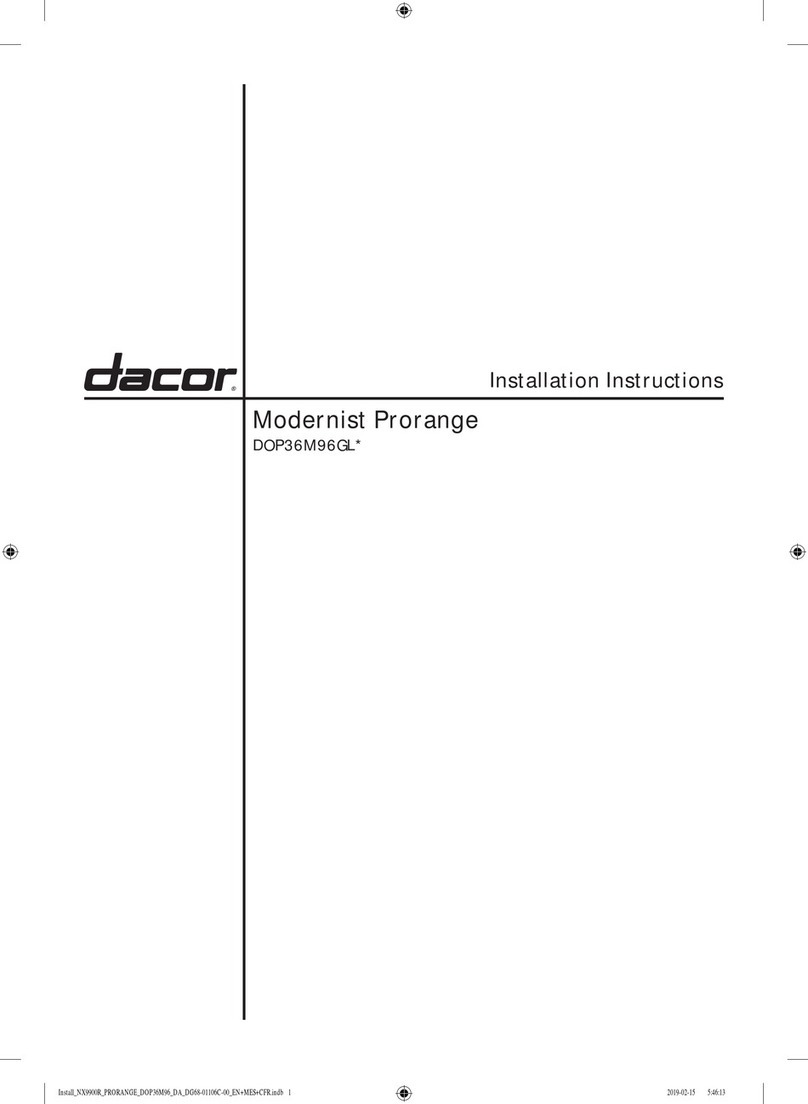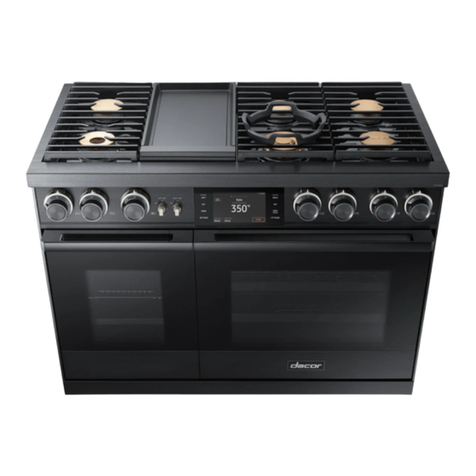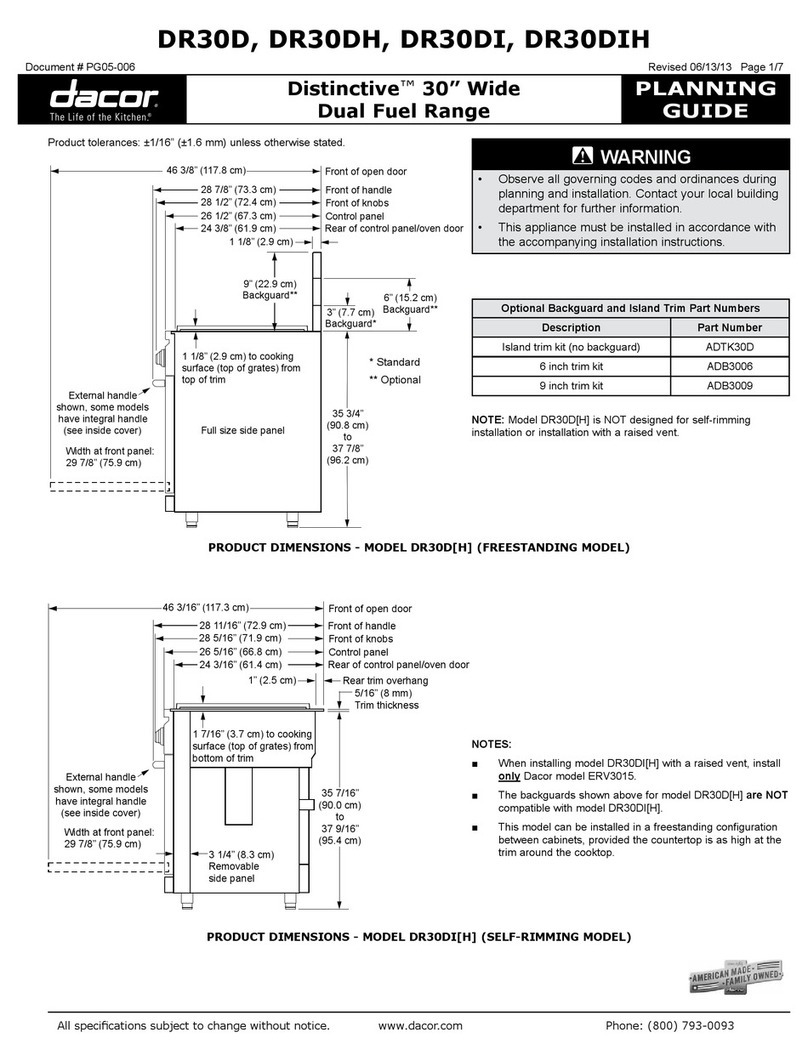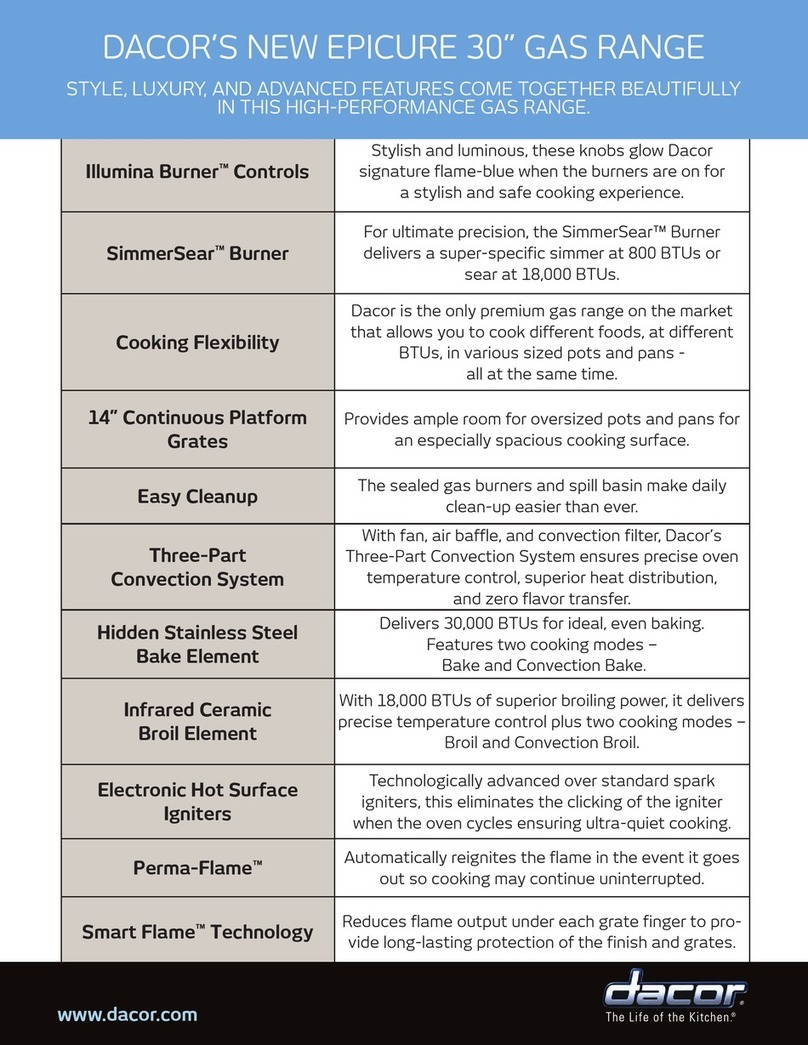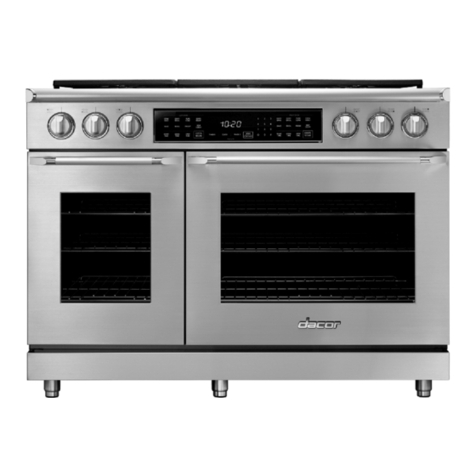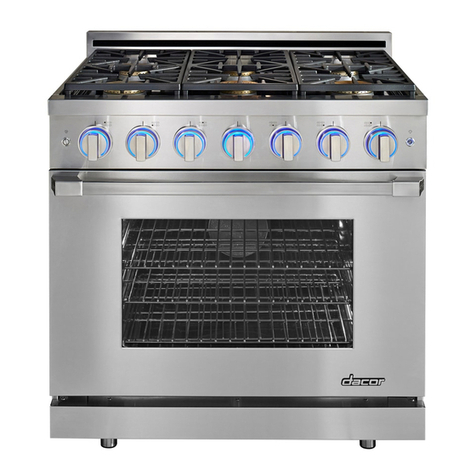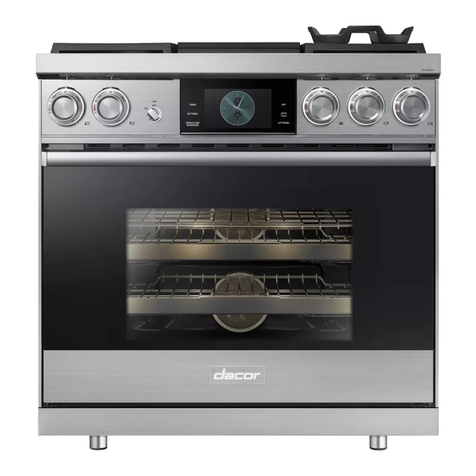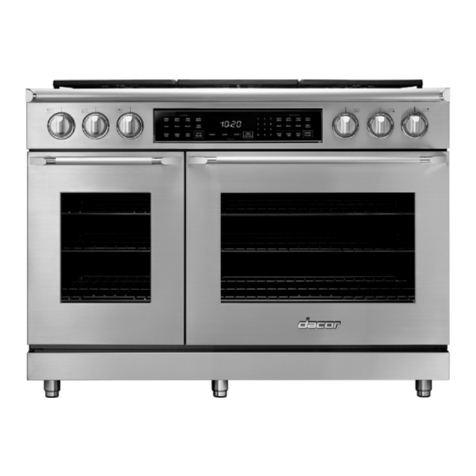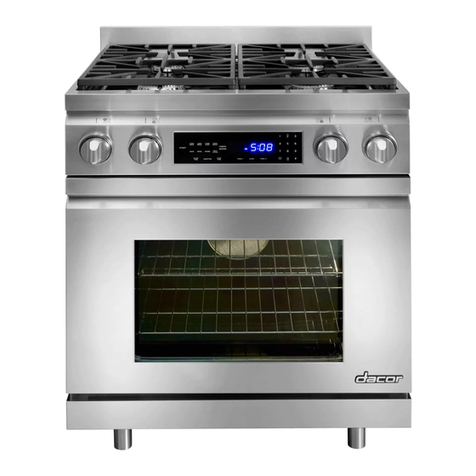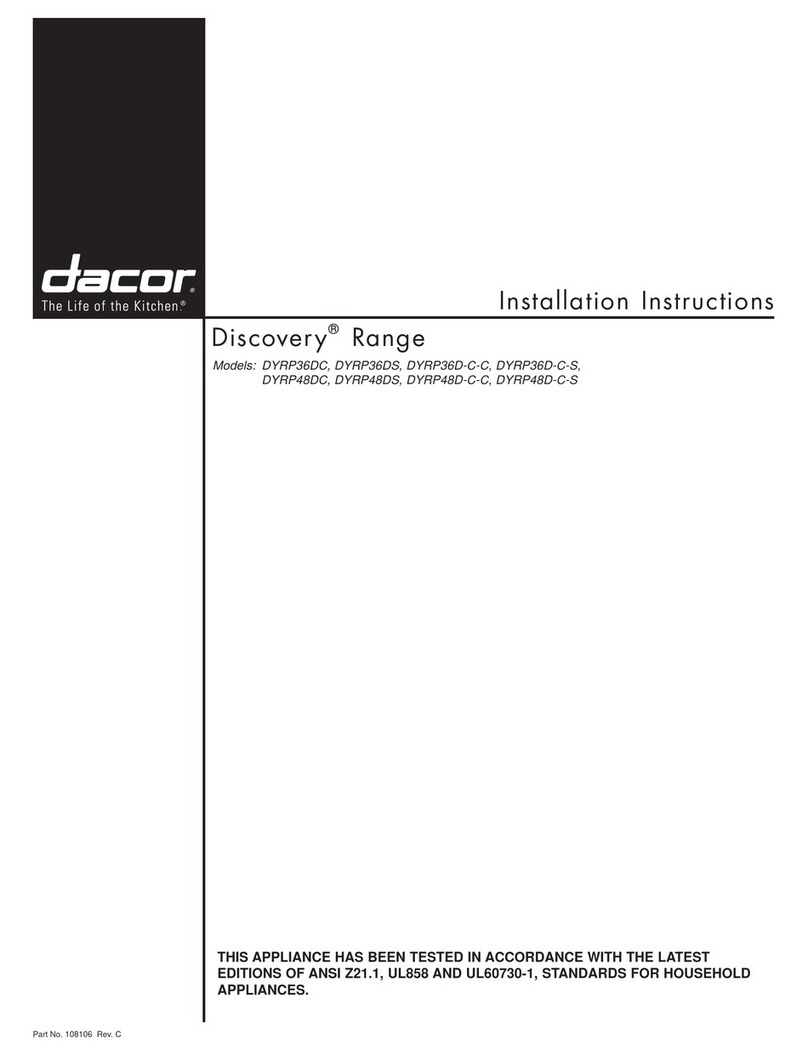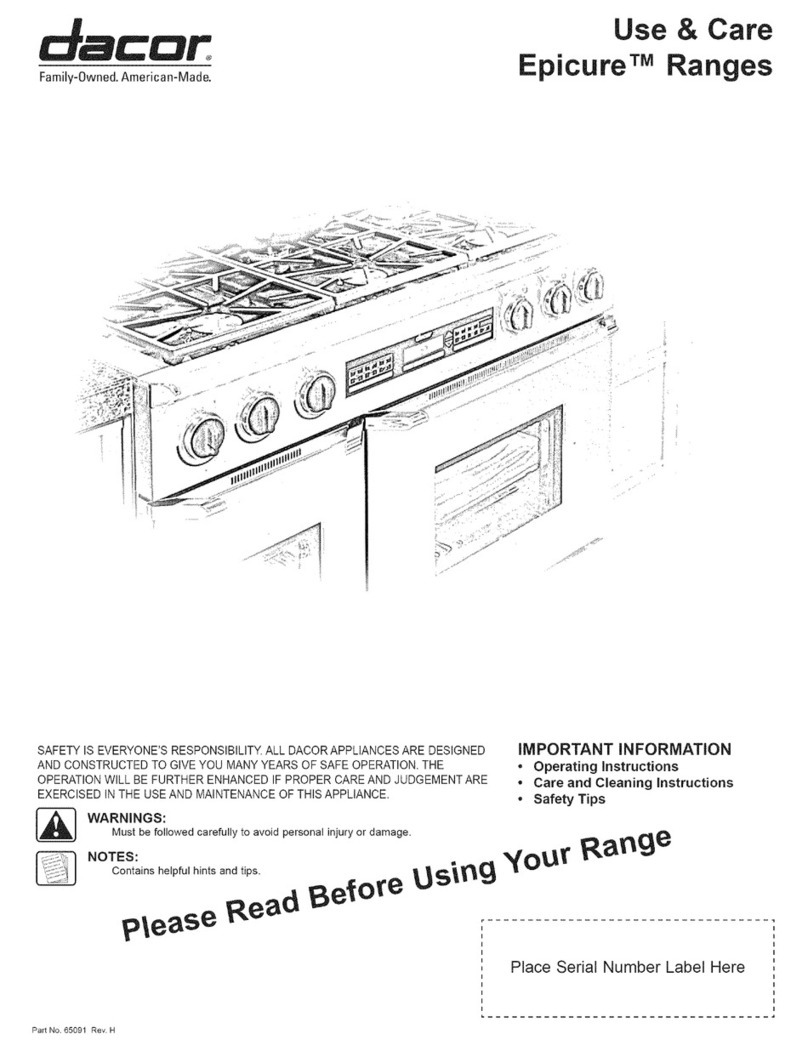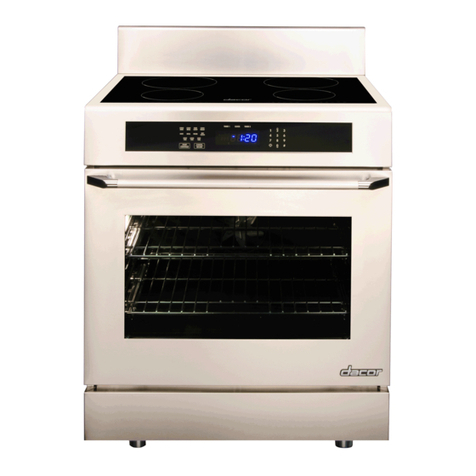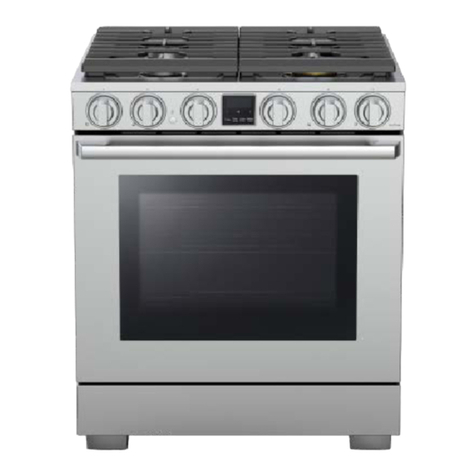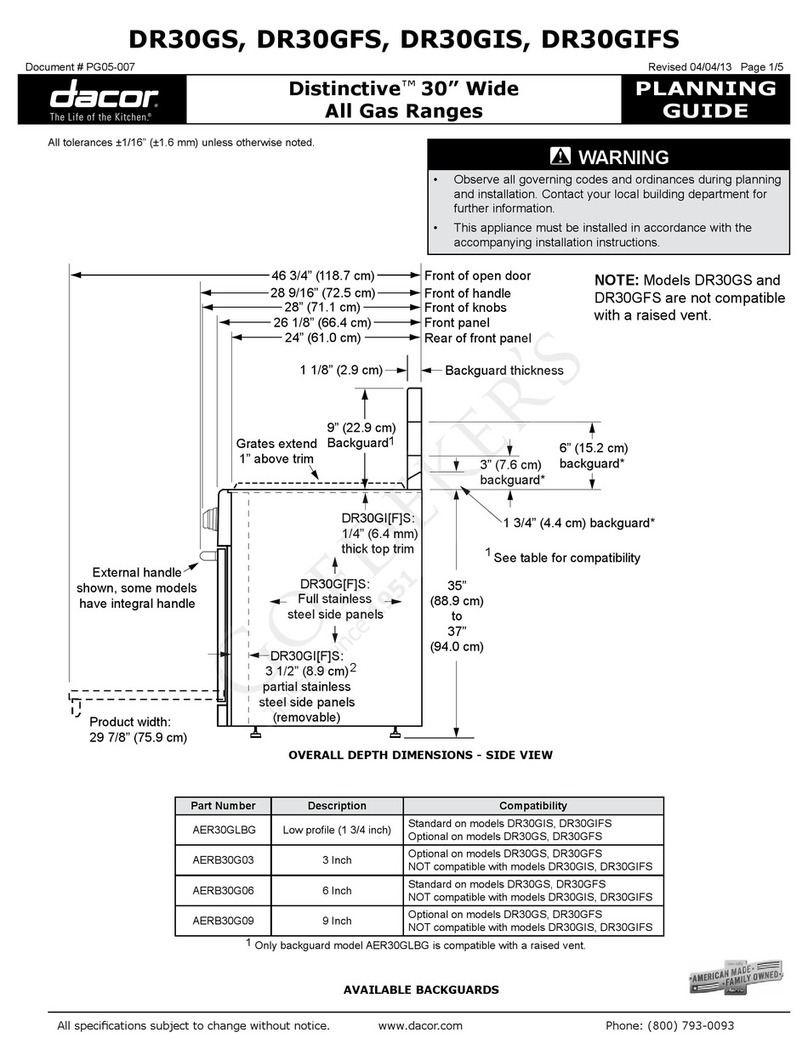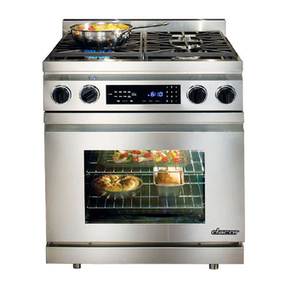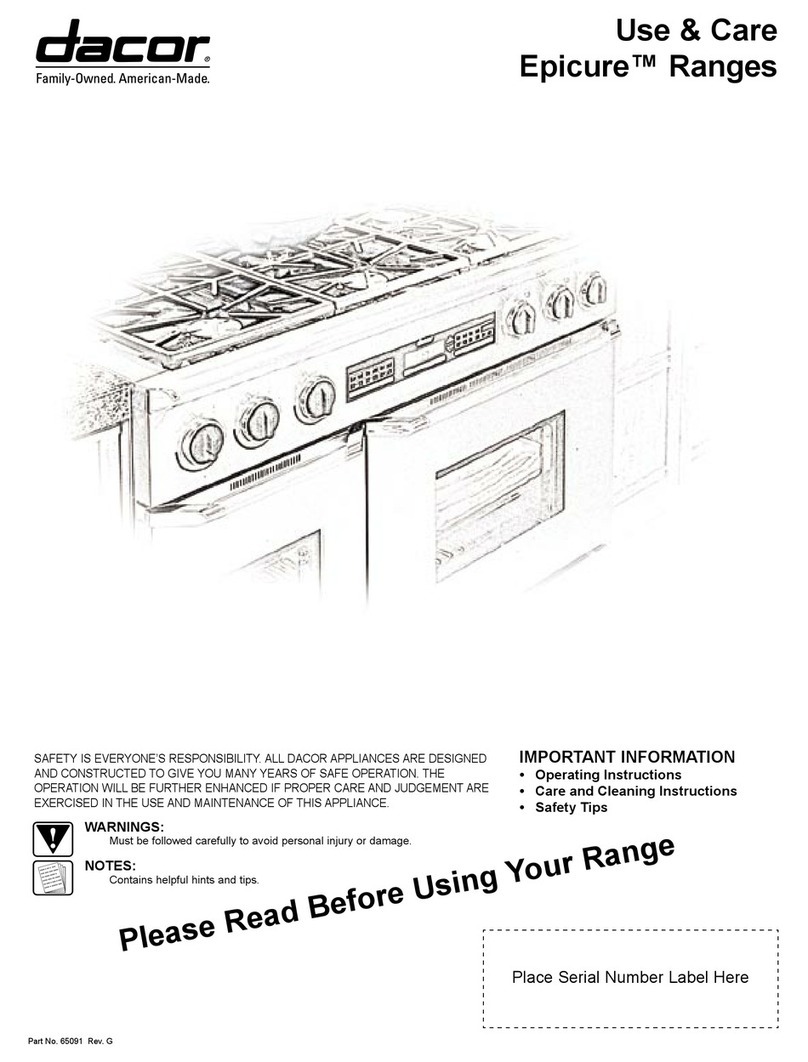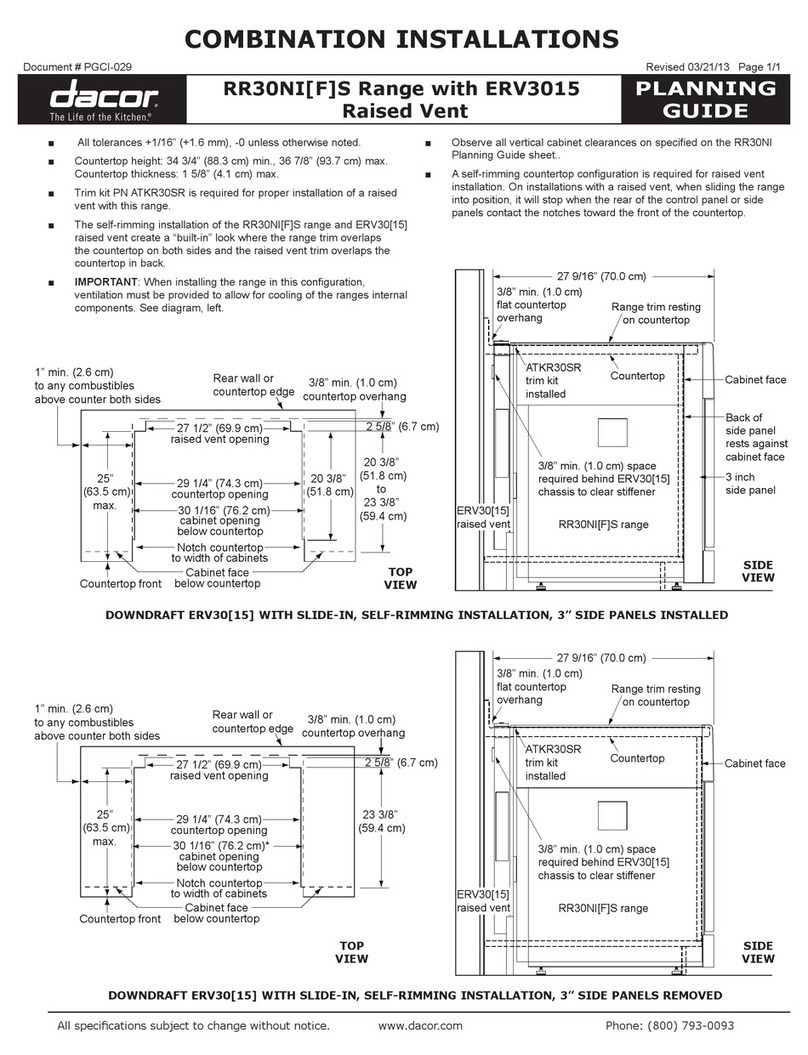
General Safety Precautions
To reduce the risk of fire, electric shock, serious injury or death when using your range, follow basic safety
3recautions, including the following:
•If you receive a damaged producL immediately contact
your dealer or builder. Do not install or use a damaged
appliance.
• Make sure that the range has been properly installed
by a qualified installer according to the accompanying
installation instructions. Have the installer show you
the location of the gas shut off valve and the electrical
outlet so that you know where and how to turn off the
gas supply and disconnect power to the range.
• Do not install, repair or replace any part of the range
unless specifically recommended in the literature
accompanying it. A qualified service technician should
perform all other service.
• Before performing any type of service, make sure that
the gas supply is off and the power cord to the range
is disconnected.
• Only use this range for cooking tasks expected of a
home appliance as outlined in this manual. This range
is not intended for commercial use. This appliance is
certified only for indoor use.
• DO NOT TOUCH THE SURFACES OF THE RANGE
DURING OR IMMEDIATELYAFTER USE. After use,
make sure these surfaces have had sufficient time to
cool before touching them.
• In the interest of safety, keep the oven 0oor shut
unless inserting or removing food from the oven or
when cleaning it.
• Do not operate the range without the backguard
attached. A fire hazard may result.
• Make sure individuals who use the range are able to
operate it properly.
• Never allow anyone, including children to sit, stand or
climb on any part of the range. Doing so may cause
damage, serious injury or death. Do not leave children
alone or unattended in the area around the range. Do
not allow children to play with the controls, pull on the
handle or touch other parts of the range.
• Do not store items of interest to children on top of or
above the range. Children could be burned or injured
while climbing on the appliance.
• Do not attempt to use this appliance in the event of a
power failure. If a power failure occurs while operating
the cooktop, turn all control knobs to the OFF position.
• Do not tamper with the controls. Do not adjust or alter
any part of the range unless specifically instructed to
do so in these instructions.
• Do not hang flammable or heat sensitive objects over
the range.
• Do not cover the burners and grates with anything
except properly selected utensils. Decorative covers
may cause a fire hazard or damage to the cooktop if a
burner is accidentally turned on with the cover in place.
• Do not heat unopened food containers such as baby
food jars and cans. Pressure build up may cause the
container to burst and cause injury.
• Keep flammable items, such as paper, cardboard
plastic and cloth away from the burners and other
hot surfaces. Do not allow pot holders to touch hot
surfaces or gas burners.
• Do not wear loose or hanging apparel while using
the range. Do not allow clothing to come into contact
with the range and surrounding areas during and
immediately after use.
• Do not use towels or bulky cloth as pot holders.
• Use only dry pot holders when removing food and
cookware from the cooktop or oven. Wet pot holders
can cause steam burns.
• If the range is near a window, do not use long curtains
as window treatment. The curtains could blow over the
cooktop and create a fire hazard.
• To avoid the possibility of fire, do not leave the range
unattended when in use.
• Clean the range thoroughly before operating it for the
first time.
• Clean and maintain the range regularly as instructed in
the Care and Cleaning section of this manual. Keep
the entire range, ventilation filters and range hoods
free of grease that could catch fire.
• Use cookware only for its intended purpose. Check
the manufacture's recommendations before use to
determine if a utensil is suitable for use with a range.
Certain types of glass, ceramic and earthenware
are not suitable for use with a range. Personal injury
or damage may result from the improper use of
cookware.
• Select cookware carefully. Use utensils of the proper
size, material and construction for the particular type
of cooking being done. Utensils need to be large
enough to contain the desired quantity of food without
boil-overs or spill-overs. Choose pans with easy to
hold handles that will stay cool while cooking. Do not
use utensils with loose handles. Avoid using pans that
are too heavy to lift safely.
